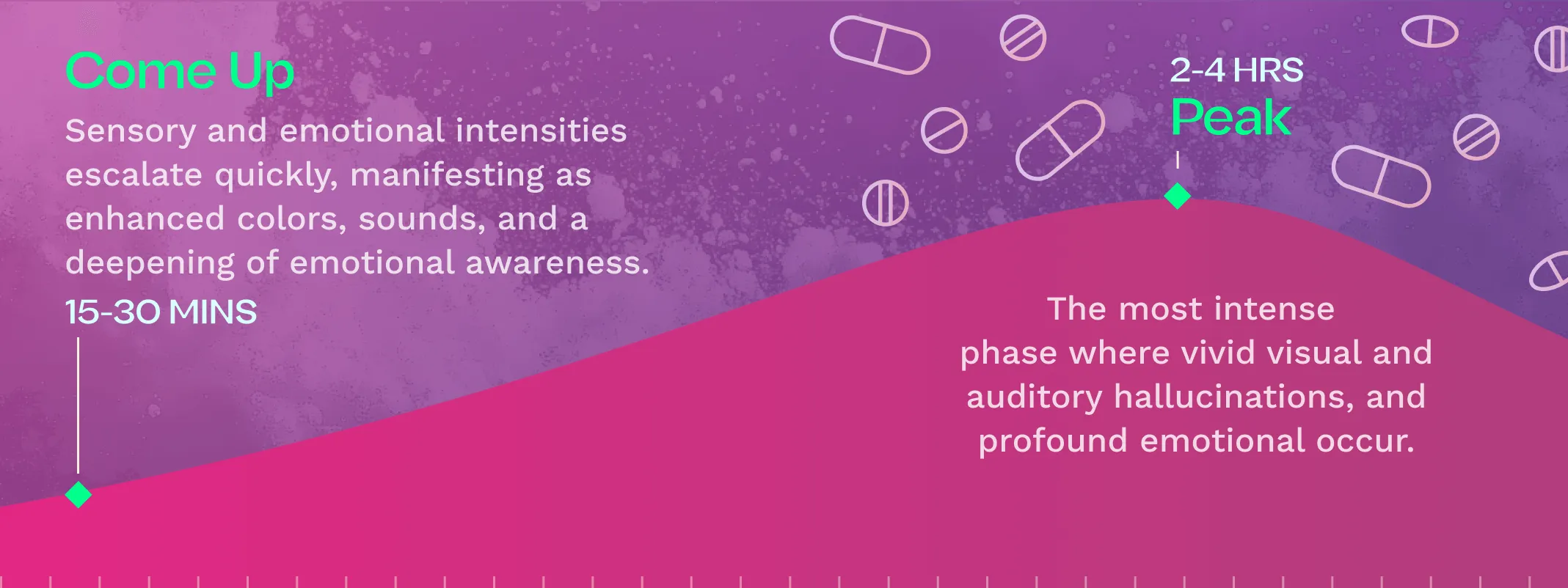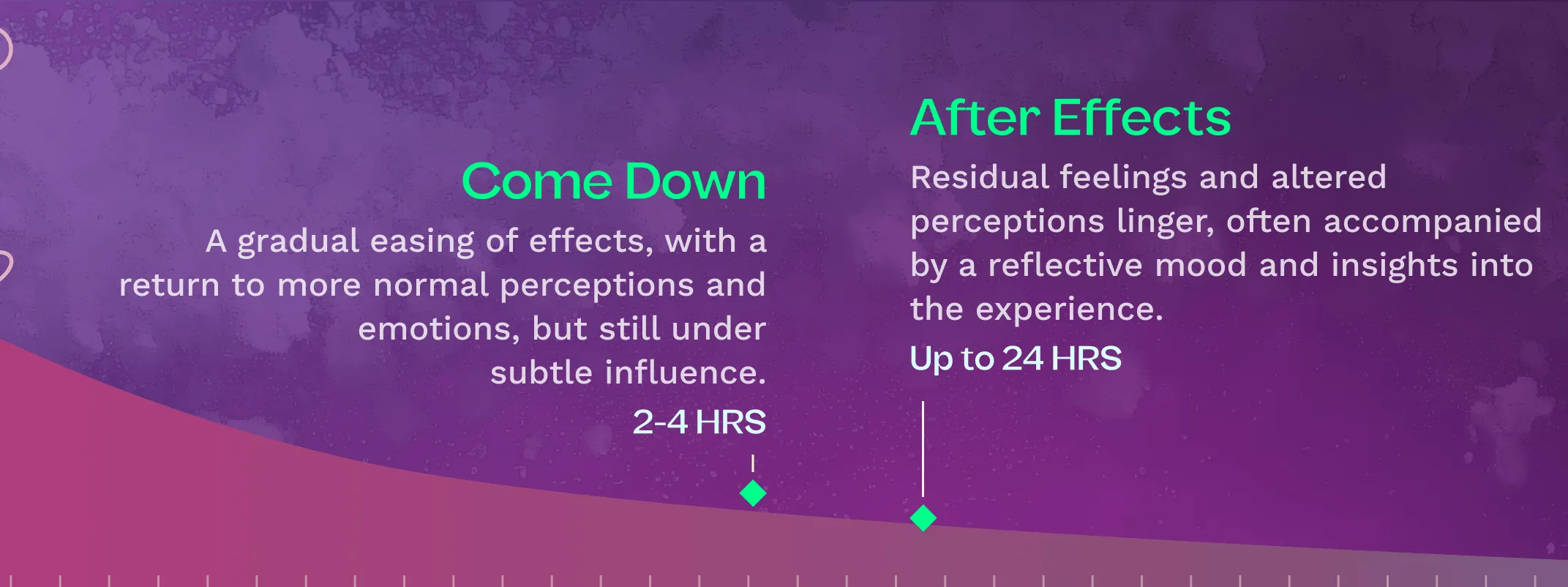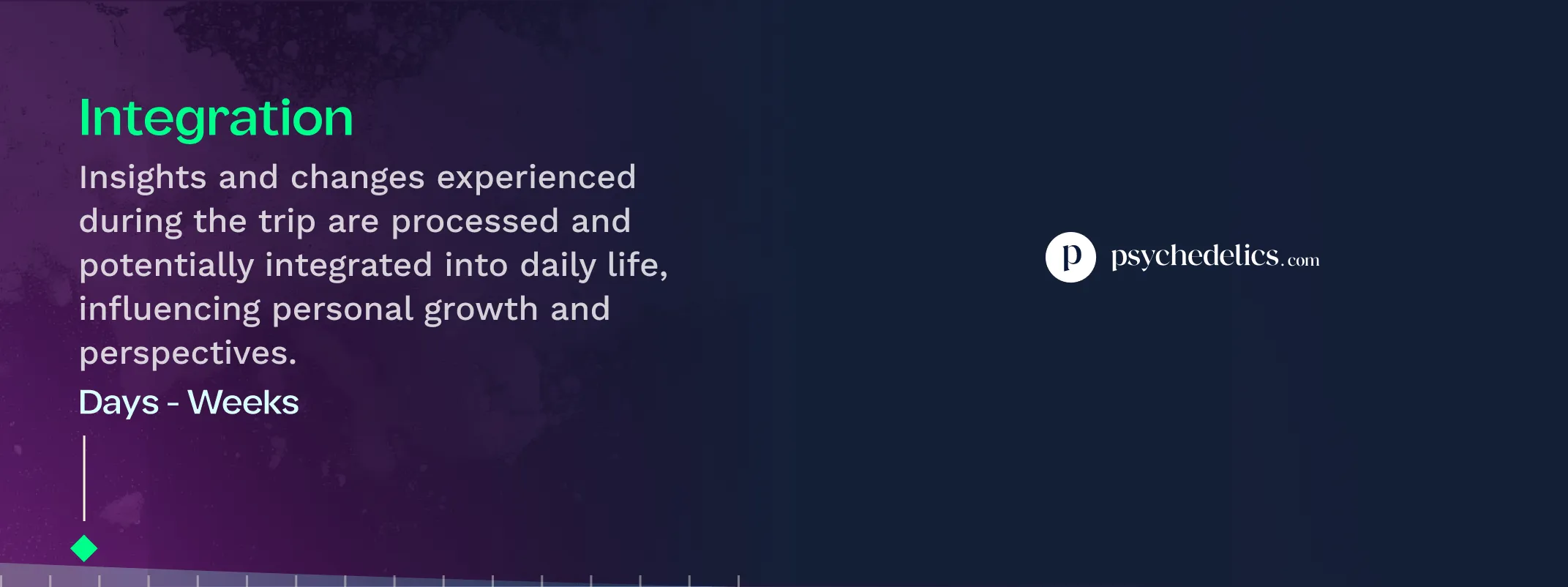
Guide
2C-B Guide and Other Phenethylamines:
Understanding the “Lost Family” of Psychedelics
Table of contents
The 2C family of drugs, synthesized primarily by Alexander Shulgin, encompasses a range of psychedelic phenethylamines (a class of psychoactive chemicals that includes MDMA and mescaline). While 2C-B is perhaps the most well-known of this family, several other 2C compounds have gained attention, both in research and recreational contexts. Some of the more commonly known 2C drugs include 2C-E, 2C-I, 2C-T-2, 2C-T-7, 2C-P, and 2C-C.(1, 2)
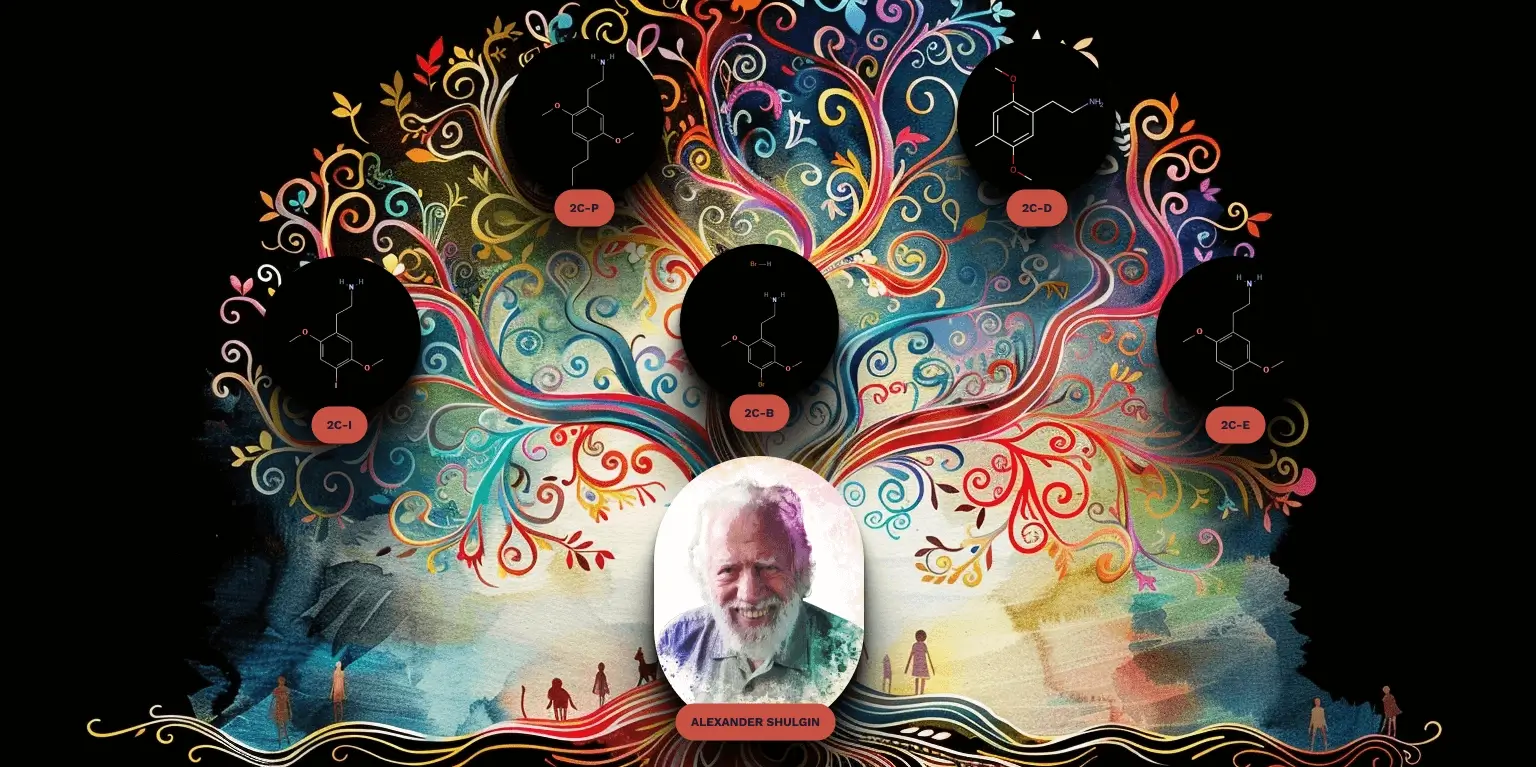
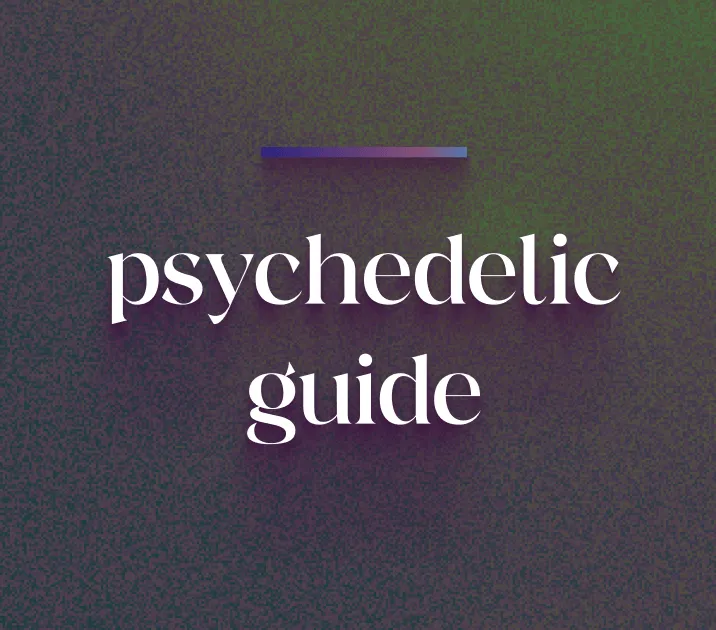
Explore Our Curated Psychedelic Guides to Learn More About Psychedelics Like LSD, Psilocybin, MDMA, DMT, Ayahuasca, and Mescaline.
Alexander Shulgin, The “Father of Phenethylamines”

Alexander Shulgin, often referred to as “Sasha” by those who knew him, was a pioneering American chemist and pharmacologist whose work has left an indelible mark on the world of psychoactive substances. Born in 1925 in Berkeley, California, Shulgin’s early interest in chemistry was ignited by a childhood experience with a chemistry set. This passion would guide him through a career that spanned decades, during which he synthesized and bioassayed (a method of measuring potency) hundreds of psychoactive compounds.(1)
Shulgin’s professional journey began in the mainstream pharmaceutical industry. He earned a Ph.D. in biochemistry from the University of California, Berkeley, and subsequently worked for Dow Chemicals, where he developed the first biodegradable pesticide, Zectran. However, after a transformative experience with mescaline in the late 1950s, Shulgin’s focus shifted toward psychoactive compounds, leading him to explore the vast landscape of phenethylamines and tryptamines(two families of psychedelic compounds).(1)
In his personal laboratory, located adjacent to his home, Shulgin synthesized and tested many novel compounds. His method was unique: after synthesizing a new substance, he would test it on himself, starting with minuscule doses and gradually increasing the amount to determine its psychoactive properties and safety profile. This self-experimentation was not just a scientific endeavor; for Shulgin, it was a deeply personal journey of exploration and discovery.(1)

Among his most notable contributions is the discovery and popularization of the 2C family of psychedelics, which includes compounds like 2C-B, 2C-E, and 2C-I. These phenethylamines, characterized by their distinct effects ranging from deep introspection to vibrant visuals, owe their discovery and documentation to Shulgin’s meticulous work. An observational study titled Acute Pharmacological Effects of 2C-B in Humans has also described their effects.(1, 2, 3, 4)
Shulgin’s legacy is not limited to his chemical creations. Alongside his wife, Ann Shulgin, he co-authored two seminal books, “PiHKAL” (Phenethylamines I Have Known And Loved) and “TiHKAL” (Tryptamines I Have Known And Loved). These works, part autobiography, and part pharmacological manual provide detailed syntheses, dosages, and subjective effects of numerous compounds, serving as invaluable resources for researchers and enthusiasts alike.(1)
What are Phenethylamines?
Phenethylamines are a diverse class of organic compounds with a common chemical structure derived from phenethylamine. Some, like 2Cs, are a class of psychedelics. This class of organic compounds share similarities in their structure and typically have a stimulating effect on the central nervous system. Their sensitivity to dose is notable, where even slight increases can amplify the experience exponentially. This characteristic makes the journey unpredictable, as a small misstep in dosing can lead to an overwhelming voyage. And like any psychedelic journey, there are potential pitfalls.(5, 6)
The mental landscape can also shift towards anxiety or challenging emotional experiences.(2, 3)
“Use them with care, and use them with respect as to the transformations they can achieve, and you have an extraordinary research tool. Go banging about with a psychedelic drug for a Saturday night turn-on, and you can get into a really bad place, psychologically. Know what you’re using, decide just why you’re using it, and you can have a rich experience. They’re not addictive, and they’re certainly not escapist, either, but they’re exceptionally valuable tools for understanding the human mind, and how it works.”
– Alexander Shulgin, PiHKAL: A Chemical Love Story
What is 2C-B?
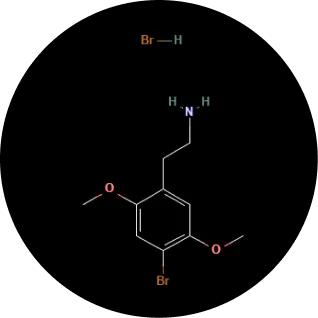
2C-B, chemically known as 4-bromo-2,5-dimethoxyphenethylamine, is a psychoactive compound that belongs to the 2C family of phenethylamines. It is often anecdotally described as exhibiting properties of both classical psychedelics and empathogens or entactogens. The compound is typically ingested orally in tablet or powder form and has been used recreationally and in therapeutic settings.(1, 4, 5, 6, 7)
2C-B primarily affects the serotonin receptors in the brain, which influence mood, emotion, and perception. By interacting with these receptors, 2C-B alters the usual patterns of serotonin transmission. Observational studies have shown users reported effects such as mood, perception, and cognition changes. While its subjective effects share some similarities with other psychedelics like LSD and psilocybin, 2C-B is noted in PiHKAL: A Chemical Love Story for its unique blend of visual, empathogenic, and euphoric effects.(1, 4, 5, 6, 7)
The effects of 2C-B can vary based on dosage, individual physiology, and set and setting. While not thoroughly researched, anecdotal and user reports suggest that 2C-B may bring on mild euphoria, enhanced tactile sensations, and increased sociability at lower doses. As the dose increases, the psychedelic effects become more pronounced, leading to visual distortions, enhanced colors, and altered thought patterns. Some users describe the experience as more “grounded” than other psychedelics, with a clearer sense of reality. However, like some psychoactive substances, 2C-B can also cause negative effects, including anxiety, paranoia, and physical discomfort. It’s worth noting that individual reactions can vary widely, and not everyone will experience the same effects from the drug.(1, 4, 5, 6)
What is 2C-E?
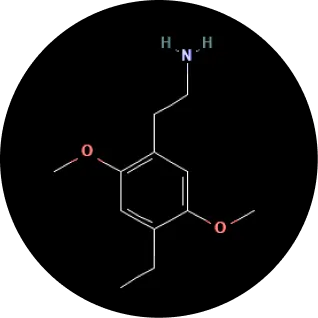
2C-E, chemically recognized as 4-ethyl-2,5-dimethoxyphenethylamine, is a notable member of the 2C family of psychedelic phenethylamines synthesized by Alexander Shulgin. Distinct from its relative 2C-B, 2C-E is often characterized by its deeper, more intense experience, setting it apart in the realm of phenethylamine experiences.(1, 8, 9)
Interacting primarily with the serotonin receptors in the brain, 2C-E may engender many mood, perception, and cognition changes. According to one observational study, 2C-E often occasions vivid visual and auditory hallucinations paired with profound introspective journeys. Many users have described experiences of heightened empathy, a deeper connection to nature, and breakthrough insights about their personal lives. Its duration is more extended than some of its 2C siblings, often unfolding over six to 10 hours.(1, 8, 9, 10)
2C-E, like many psychedelics, can have both positive and negative effects. On the positive side, many users have reported transformative experiences, leading to personal growth, enhanced creativity, and a renewed sense of purpose. Its potential therapeutic benefits, such as fostering a sense of unity, have also been explored, albeit in limited capacities. However, the depth and intensity of 2C-E also comes with potential challenges.
Given this spectrum of effects, individuals must approach 2C-E with informed respect and caution, ensuring a safe setting and, ideally, having prior experience with psychedelics.(1, 7, 8, 9, 10)
What is 2C-I?

While 2C-E offers a deep introspection, another member of the 2C family, 2C-I, presents a unique tapestry of effects. Chemically known as 4-iodo-2,5-dimethoxyphenethylamine, 2C-I is yet another brainchild of Alexander Shulgin.(1, 11)
2C-I, in its interaction with the brain’s serotonin receptors, tends to produce both psychedelic and stimulant effects depending on the dose. PiHKAL: A Chemical Love Story describes 2C-I’s effects as a vibrant enhancement of the visual and auditory senses, with colors becoming more vivid and sound taking on a richer texture. Many users anecdotally recount feelings of euphoria, increased energy, and a heightened curiosity about the world around them. This sense of wonder and exploration can, according to the Shulgins, make 2C-I experiences feel more “playful” or “adventurous” compared to the profound introspection often associated with 2C-E.(1, 11, 12)
The journey with 2C-I may be marked by what some users feel is its potential to foster creativity, joy, and a renewed appreciation for one’s surroundings. Its stimulant properties may also lead to bouts of laughter, dancing, or a desire for social interaction. However, as with all psychedelics, your experience may differ from that of others. Some users might find the stimulating effects to verge on restlessness or overstimulation.
As always, when considering an experience with 2C-I, it’s essential to be well-informed, to ensure a supportive environment, and to respect the compound’s potency and potential unpredictability.(1, 11, 12)
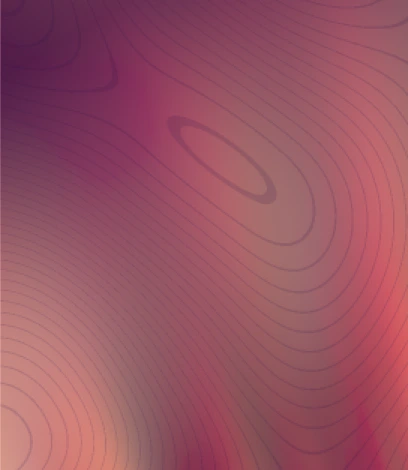
Would You Like to Learn More About Empathogens like MDMA? Read Our Complete Guide to the “Love Drug” For More
Other Notable Phenethylamines
The 2C family boasts a variety of compounds, each with its unique characteristics and effects. Beyond the more commonly discussed 2C-B, 2C-E, and 2C-I, several other members of this family have become notable in both recreational and research contexts.(1, 13)
2C-T-2 and 2C-T-7: These two compounds, distinguished by their thioether group (organic sulfide molecules), offer experiences that diverge from the typical 2C profile. As described by Alexander Shulgin in PiHKAL: A Chemical Love Story, these compounds may exhibit both psychedelic and empathogenic (increased feelings of empathy) effects. 2C-T-7, in particular, has been noted for its long duration compared to 2C-B, and intense visual effects. However, it’s worth noting that these compounds have also been associated with a higher risk of adverse reactions, making them subjects of caution and respect.(1, 13, 14)
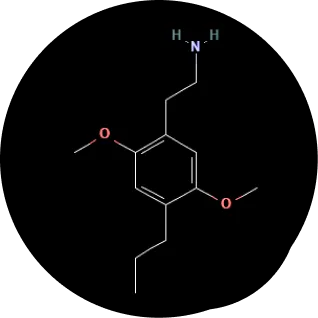
2C-P: Known for its extended duration vs. 2C-B, 2C-P can offer experiences that last up to 12 hours or more. Its potency is also notable, with small doses potentially leading to profound effects. Users must be prepared for a potentially demanding experience due to its duration and intensity.(1, 13, 14)
2C-C: Compared to other members of its class, 2C-C may require a higher dosage to achieve effects. According to PiHKAL: A Chemical Love Story, 2C-C offers a gentler and more introspective experience. Its shorter duration, lasting just two to four hours, and less intense visual effects, compared to 2C-P, may make it a choice for those seeking a less overwhelming psychedelic journey. However, its subtlety may not diminish its insight and emotional exploration potential.(1, 13, 14)
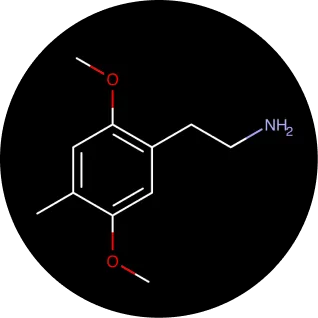
2C-D: Sometimes referred to as a “psychedelic tofu” because of its adaptability, 2C-D is unique. As described by Shulgin, it can either be mild on its own or act to enhance and modify the effects of other psychedelics when combined. Its versatility has made it a subject of interest for psychonauts and researchers alike, exploring its potential in various therapeutic and recreational settings.(1, 13, 14, 15, 16)
The 2C family of phenethylamines offers diverse experiences, from the deeply introspective to the vibrantly visual. As with all such psychedelic substances, understanding, respect, and caution are paramount when navigating their effects.
What is Tucibi?

Tucibi sometimes spelled Tuci or Tusi, is a new designer drug that is easily and often incorrectly conflated with 2C-B and other 2C compounds. However, Tucibi rarely contains any 2C-B. Or other 2Cs at all. More often than not, it contains a mixture of drugs like MDMA, LSD, methamphetamine, ketamine, cocaine, fentanyl, and occasionally heroin.(17)
If you or someone you know is offered or acquires a drug being sold as Tuci, Tusi, or “pink cocaine,” you should be cautious. Due to its recent emergence, statistics on injuries and related deaths are limited. Nonetheless, you should never consume Tusi without proper testing, as mixing drugs, especially in unknown quantities, can be dangerous. If fentanyl is involved, the consequences could be deadly.(17)
According to Insightcrime.org, some individuals may be able to access a version of Tuci that is more pure and has less of a risk of opioid contamination. Regardless of where your drugs are sourced, it is always important to test them before dosing.

Why and When Did Ann and Alexander Shulgin First Discover 2C-B? Read Our Dedicated Article to Learn More About the 2C-B and the Shulgins
Is 2C-B Legal?
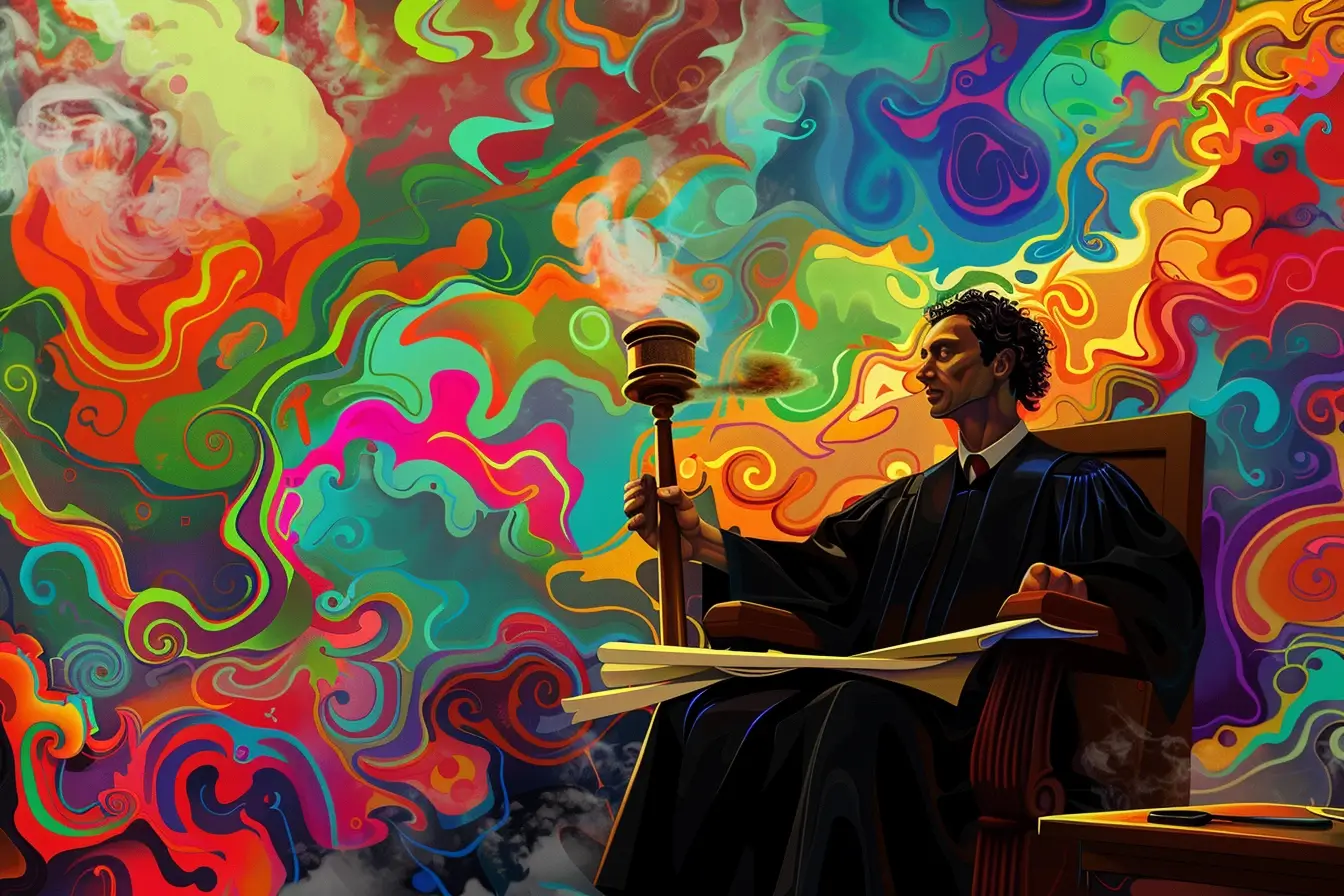
The legal trajectory of 2C-B has been shaped by a combination of its increasing popularity, concerns over its psychoactive effects, and broader drug policy trends. 2C-B initially remained relatively obscure in recreational and research circles. However, by the late 1980s and early 1990s, its use began to gain traction, especially within the rave and club scenes. Its effects, often anecdotally described as a blend between LSD and MDMA, made it particularly appealing to users seeking a unique psychedelic experience.(18, 19, 20)
As its popularity grew, so did concerns from regulatory bodies. The primary apprehension was its potential for abuse and the lack of comprehensive research regarding its long-term effects. In the United States, these concerns culminated in the Drug Enforcement Administration (DEA) classifying 2C-B as a Schedule I substance in 1995. Schedule I classification implies that the substance is considered to have a high potential for abuse, no currently accepted medical use in treatment, and a lack of accepted safety for use under medical supervision. This categorization effectively criminalized the possession, distribution, and manufacture of 2C-B. (18, 19, 20)
The decision to place 2C-B on the Schedule I list was not solely based on the compound’s intrinsic properties. The 1990s saw a broader crackdown on rave culture and its associated substances. For instance, the RAVE Act (Reducing Americans’ Vulnerability to Ecstasy Act) of 2003 targeted MDMA but also had implications for other substances like 2C-B that were prevalent in similar settings. The overarching goal was to curb the use of drugs that were perceived to be gaining popularity among young adults and club-goers.(21)
Internationally, the legal status of 2C-B varies, but many countries have followed suit in criminalizing its possession and distribution. The United Nations has yet to specifically schedule 2C-B, limiting its regulation to individual countries. However, due to concerns similar to those in the U.S., many nations have placed restrictions or outright bans on the substance.(21)
In the United States, all 2C drugs are illegal under the Synthetic Drug Abuse Prevention Act of 2012, which prohibits its possession, distribution, and manufacture.

Are College Students More Likely to Encounter Psychedelics? Read Our Student’s Guide to Safe Psychedelic Use and Arm Yourself with the Knowledge You Need for a Safe, Successful Trip
Contraindications for 2C Compounds and Serotonergic Psychedelics
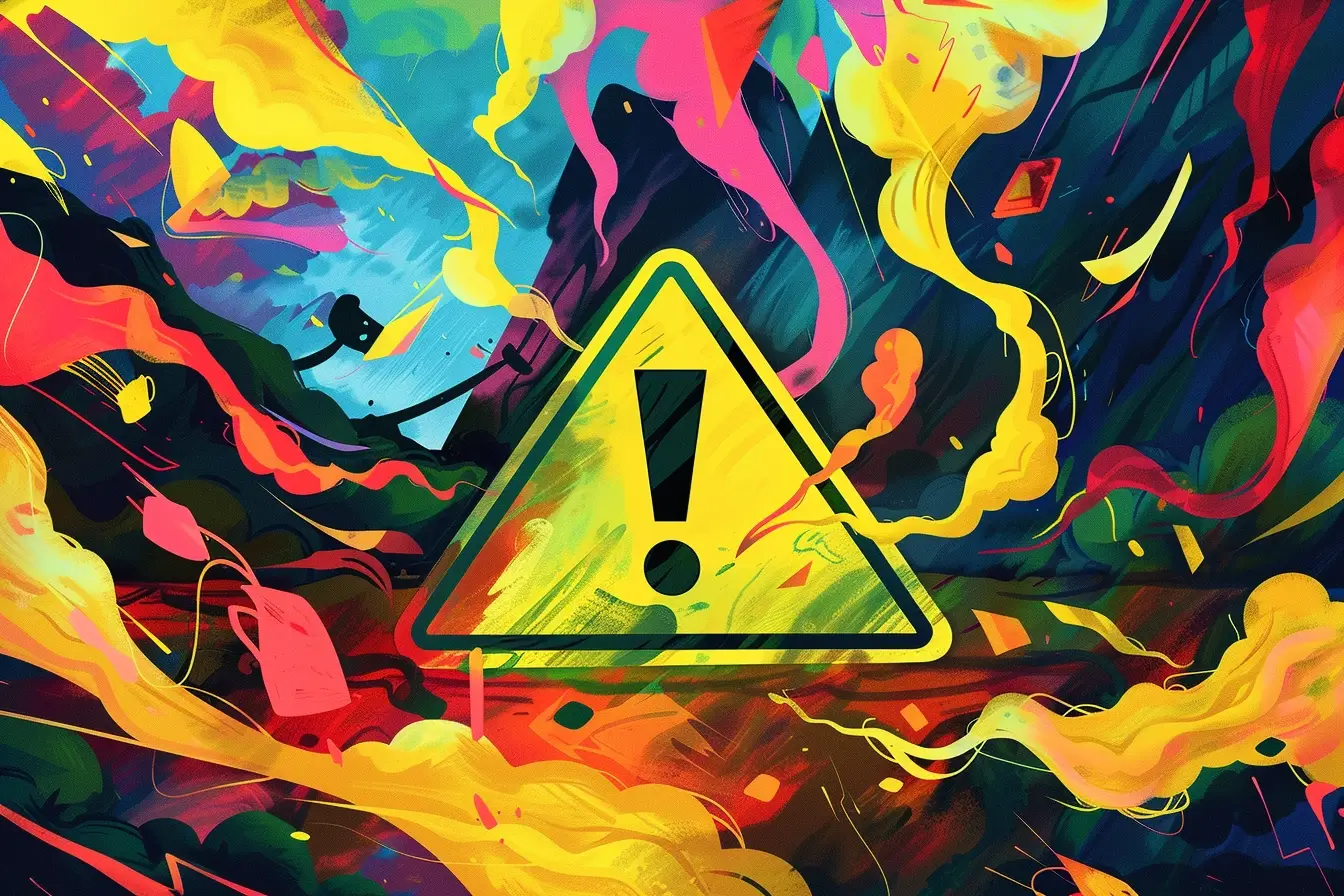
Like many serotonergic psychedelics, the 2C family of drugs may interact with various substances and conditions, potentially leading to harmful effects. While research on the 2C family is limited compared to more well-known substances like LSD or psilocybin, certain contraindications can be inferred based on their mechanism of action and anecdotal reports. It’s crucial to approach these compounds cautiously and be aware of potential risks, especially concerning possible interactions with other drugs.(22, 23)
Interaction with Medications and Other Drugs .(22, 23)
SSRIs and MAOIs:
Selective Serotonin Reuptake Inhibitors (SSRIs) and Monoamine Oxidase Inhibitors (MAOIs) can interact with serotonergic psychedelics. Combining them can lead to serotonin syndrome, a potentially life-threatening condition.
Stimulants:
2C compounds share some similarities with other stimulants, like amphetamines or cocaine, which, if combined, can increase the risk of cardiovascular issues, such as elevated heart rate and blood pressure.
Other Psychedelics:
Combining 2C drugs with other psychedelics can lead to unpredictable effects and may intensify the experience beyond what is expected or desired.
Cannabis:
Combining cannabis with 2C drugs can lead to a more intense psychedelic experience than desired. This may increase the risk of anxiety or an adverse psychedelic experience (aka a bad trip).
Tramadol:
If used with 2C-B, Tramadol may lower the seizure threshold, increasing the risk for predisposed individuals.
Physical Health Considerations
People with certain health conditions should exercise caution or avoid 2C compounds altogether. (22, 23)
Mental Health Considerations:
While many psychonauts seek out psychedelics for introspection and personal growth, those with certain mental health conditions might face increased risks. (25)
Negative emotions can be magnified during the trip or if you are feeling mentally unstable or undergoing significant stress. Understanding potential contraindications and interactions is essential for ensuring a safe and beneficial journey. Always consult with healthcare professionals when considering using any psychoactive substance, especially when other medications or health conditions are involved.(22, 23, 24, 25)
The Importance of Set and Setting

The concept of “set and setting” is foundational in the realm of psychedelic experiences and is often emphasized by researchers, therapists, and experienced users alike. It refers to the internal and external environments that frame a psychedelic journey, both of which may profoundly influence the nature and outcome of the experience.(26, 27)
Some key points about set and setting include:
Set:
Refers to the internal mindset of a person before entering a psychedelic experience. This includes emotional state, expectations, intentions, and mental health.
Setting:
Pertains to the external physical and social environment where the psychedelic experience occurs. Elements such as location, comfort, and the presence of trusted individuals are key.
Impact on the Experience:
Both set and setting are crucial in shaping the journey and outcomes of a psychedelic experience.
Guidance for Use:
Ensuring a supportive set and setting is essential for maximizing the benefits and minimizing the risks associated with psychedelics like the 2C family.
“Set” pertains to the internal mindset of the individual embarking on the psychedelic journey. This encompasses one’s emotional state, expectations, intentions, and overall mental health. An individual feeling optimistic, open, and curious might have a vastly different experience than someone anxious, fearful, or harboring unresolved traumas. The intentions going into the experience, whether for personal growth, healing, or simple curiosity, can also guide the trajectory of the trip. Thus, ensuring a positive and stable mindset is crucial, as substances like the 2C drugs can magnify unresolved emotions or psychological issues.(26, 27)
“Setting,” on the other hand, refers to the physical and social environment where the psychedelic experience occurs. This includes the location, comfort level, the presence (or absence) of other people, and the overall ambiance. A familiar, comfortable, and safe environment can provide a grounding anchor during the intense moments of a trip. The presence of a trusted friend or a trained guide can also be invaluable, offering reassurance and guidance if the experience becomes challenging. Conversely, an unfamiliar or chaotic environment can lead to feelings of paranoia, anxiety, or disorientation.(26, 27)
The importance of set and setting regarding psychedelics like the 2C family cannot be overstated. These compounds have the potential to offer profound insights, healing, and transformative experiences, but they also come with risks. Ensuring a positive mindset and a conducive environment is paramount in navigating the 2C experience and maximizing the benefits while minimizing potential challenges.(26, 27)

Psychedelic Use and Safety Go Hand-in-Hand. Explore More Safety and Harm Reduction Tips in This Handy Guide
Clinical Research Involving 2C-B
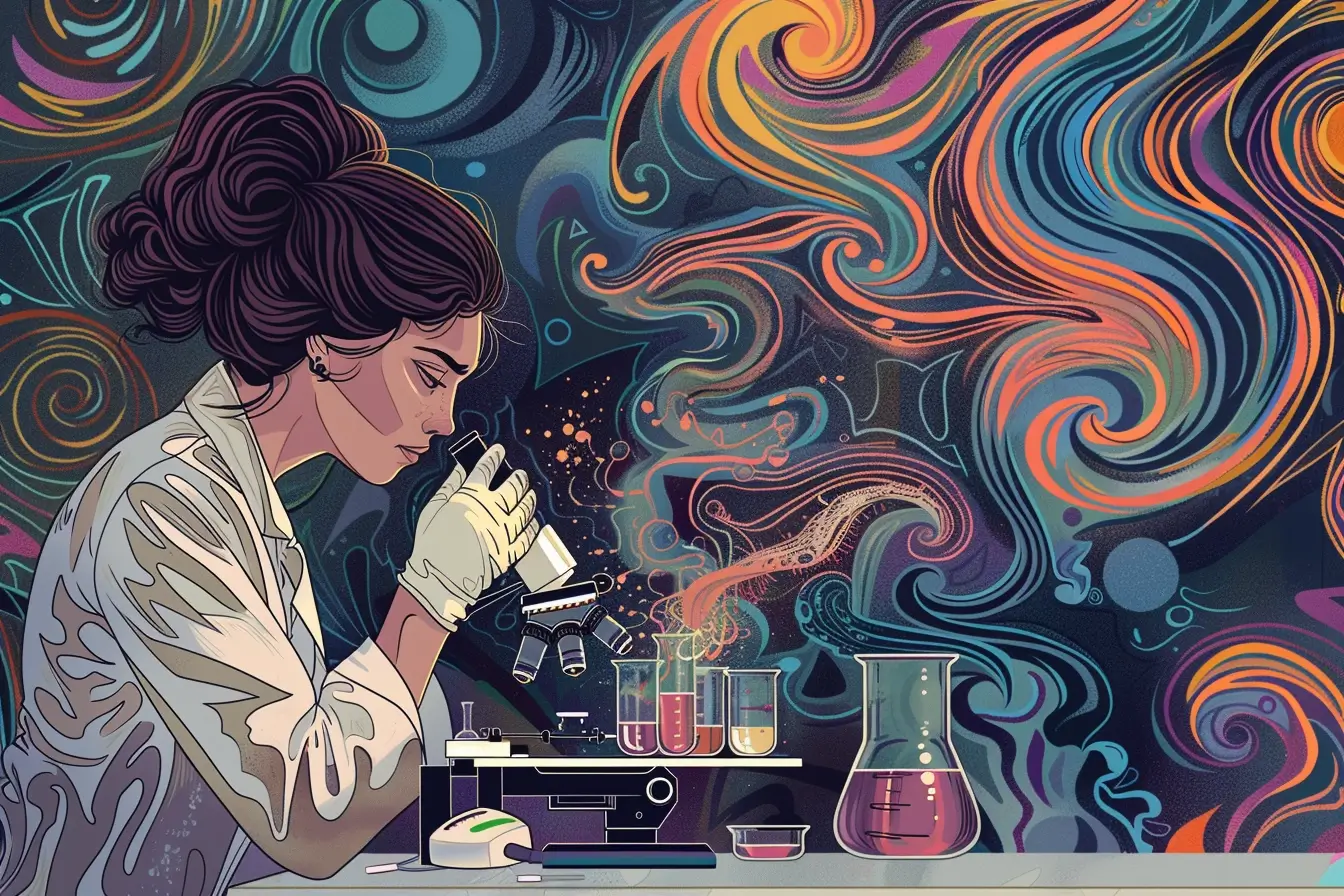
Unfortunately, 2C-B and the 2C family in general, are among the least researched psychedelics. As of 2023, there has only been one clinical trial involving 2C-B. The study, conducted by Maastricht University, compared the acute effects of 2C-B with psilocybin and a placebo. This double-blind, placebo-controlled study (meaning neither participants nor administrators knew whether someone had received a placebo or the active drug) involved 22 healthy, psychedelic-experienced participants.(28)
It evaluated the immediate subjective, cognitive, and cardiovascular effects of 20 mg of 2C-B compared to 15 mg of psilocybin and a placebo. The study found that 2C-B elicited alterations in waking consciousness of a psychedelic nature, with dysphoria (a state of unease), subjective impairment, auditory alterations, and affective elements of ego dissolution being more pronounced under psilocybin.(28)
Both compounds showed similar effects in terms of psychomotor (conscious movement) slowing and spatial memory impairments, but neither produced empathogenic effects. The duration of self-reported effects of 2C-B was shorter than that of psilocybin, resolving largely within six hours, and was categorized as a subjectively “lighter” psychedelic experience when compared to psilocybin.(28)
What to Expect During a 2C-B Trip

Embarking on a psychedelic journey with 2C-B can be an adventure of sensory enhancement and emotional exploration. One of the most prominent features of a 2C-B trip is the visual spectacle it may present. Users frequently report a vivid intensification of colors, with the world taking on a kaleidoscopic quality. Patterns may seem to dance, and ordinary objects can transform into intricate, mesmerizing artworks.
These visual alterations are often anecdotally described as less intense than those induced by LSD or psilocybin, but they carry their unique beauty and charm.(1)
Visual Effects:
2C-B often enhances visual perception, making colors more vivid and turning ordinary visuals into kaleidoscopic experiences. Although these effects are milder compared to LSD or psilocybin, they are uniquely captivating.
Auditory Enhancement:
This substance profoundly deepens auditory experiences, especially with music, transforming it into a multi-dimensional experience where each note and rhythm resonates deeply.
Tactile Sensitivity:
2C-B increases tactile sensitivity, intensifying physical sensations. This can make simple touches feel exceptionally profound and enhance emotional and physical intimacy during personal interactions.
“The drug effect first became known to me as a shift of colors toward golden and rose tones. Pigments in the room became intensified. Shapes became rounder, more organic. A sensation of lightness and rivulets of warmth began seeping through my body. Bright lights began pulsing and flashing behind my closed lids. A began to perceive waves of energy flowing though all of us in unison. I saw a gridwork of electrical energy beings, nodes on a bright, pulsating network of light.”
– Alexander Shulgin, PiHKAL: A Chemical Love Story
Another aspect of the 2C-B experience is its profound enhancement of auditory sensations. Music, in particular, reportedly becomes a multi-dimensional journey. Every note, beat, and lyric can resonate deeply, allowing the listener to experience songs as if for the first time. This heightened appreciation can make the music feel enveloping, with some users describing it as being “wrapped” in the melodies and rhythms, leading to profound emotional and introspective moments.(1)
Touch, too, becomes a focal point of the 2C-B experience. The world feels more tactile, and sensations on the skin can be magnified. This heightened sensitivity often translates to a deeper sense of connection during physical interactions, making hugs, massages, or even a gentle breeze feel incredibly soothing and intimate. Alongside this, many users note an increased libido, with the compound often enhancing sexual experiences by making them feel more emotionally connected and physically pleasurable.(1, 29)
“The room was cool, and for the first hour, I felt cold and chilled. That was the only mildly unpleasant part. We had been hanging crystals earlier that day, and the visions I had were dominated by prismatic light patterns. It was almost as if I became the light. I saw kaleidoscopic forms – similar to, but less intense than when on acid – and organic forms like Georgia O’Keefe flowers, blossoming and undulation. My body was flooded with orgasms – practically just from breathing. The lovemaking was phenomenal, passionate, ecstatic, lyric, animal, loving, tender, sublime. The music was voluptuous, almost three-dimensional. Sometimes the sound seemed distorted to me, underwater-like. This was especially so for the less good recording – but I could choose to concentrate on the beauty of the music.”
– Alexander Shulgin, PiHKAL: A Chemical Love Story
However, 2C-B, like all psychedelics, can offer the potential for challenging moments. One’s mindset and environment can influence the experience, so it’s crucial to ensure a comfortable setting and to be with trusted individuals, preferably not alone.
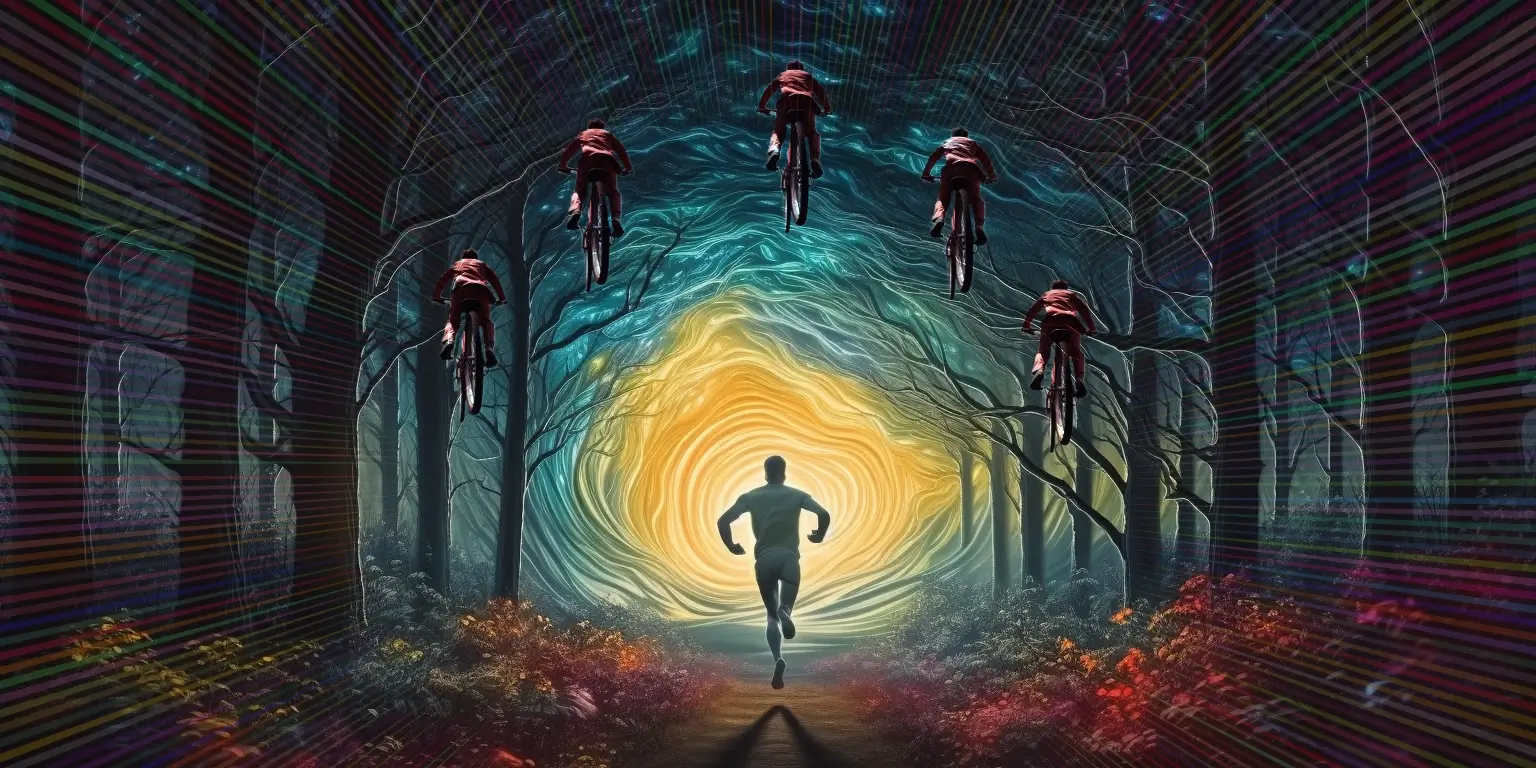
Can a Bad Trip Lead to Good Things? Read How One Man’s Worst Psychedelic Experience Was the One He Needed Most
The 2C-B Trip Timeline
A 2C-B trip, like other psychedelic experiences, follows a general timeline. However, the exact duration and intensity can vary based on several factors, such as dosage, individual metabolism, and the method of ingestion. This is a general outline of the 2C-B trip timeline created using anecdotal reports:(1, 30)
Onset (45 minutes or longer):
- The effects of 2C-B typically manifest within 45-75 minutes after ingestion.
- Users may start to notice changes in sensory perception, including visual enhancements, alterations in sound perception, and a shift in the perception of time.
- Nausea and stomach discomfort are often reported during this phase. However, it should pass quickly.
Come Up (15 to 30 minutes):
- During this phase, the effects gradually intensify.
- Users often report feeling a range of emotions, from euphoria to introspection. Visual hallucinations, such as patterns and colors, become more pronounced.
- Physical sensations may include tingling, warmth, or a sense of bodily lightness or heaviness.
Peak (2 to 4 hours):
- The peak is where the effects of 2C-B are strongest.
- Experiences during the peak can be intensely emotional and introspective, including profound thoughts, intense sense of touch, or feelings of connectedness with the universe.
- The sensory enhancements are most pronounced during this phase, with vivid visual and auditory experiences.
Come Down (2 to 4 hours):
- Some residual effects, like an altered sense of reality or lingering emotional insights, may persist for several hours after the primary effects have subsided.
- Users often report a period of reflection or contemplation following the experience.
After Effects (up to 24 hours):
- Following the peak, the trip intensity gradually diminishes.
- Users begin to feel more grounded and connected to their normal consciousness, although some effects, like altered sensory perceptions, may still be present.
- A window exists where some individuals may be unable to sleep or feel restless.
Integration (days to weeks):
- This is the period following the immediate effects, where the user processes and integrates the experience into their daily life.
It’s important to note that these timelines are approximate and can vary widely from person to person. Factors like the individual’s body chemistry, the environment in which 2C-B is taken, and the dosage play significant roles in shaping the experience. Users should approach 2C-B cautiously, particularly regarding dosage and setting, to ensure a safe and positive experience.(1, 30)
Integrating Your 2C-B Experience
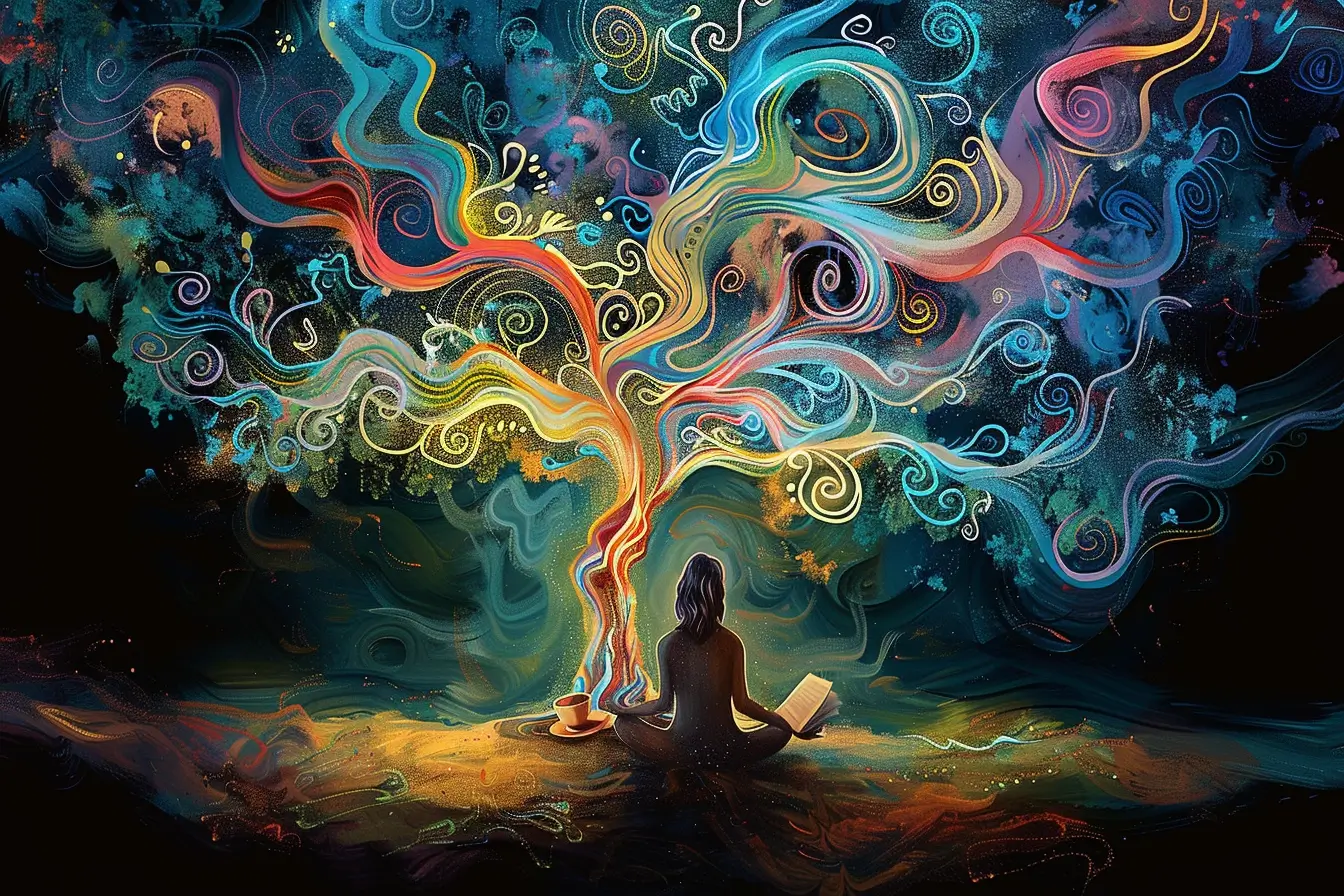
Integration after using psychedelics is crucial because these substances often induce profound and complex experiences that can be challenging to comprehend and assimilate into one’s everyday life. During a psychedelic experience, individuals might encounter intense emotional revelations, altered perceptions, or even spiritual or existential insights. Without proper integration, these experiences can remain confusing, overwhelming, or isolated from one’s daily reality. Integration helps process and understand these experiences, allowing individuals to derive meaningful insights or lessons from them.(31)
Integration involves reflecting on what was experienced, felt and thought and finding ways to apply any new understanding to one’s life. This process can lead to personal growth, emotional healing, and a deeper connection with oneself and the world. Additionally, integration can safeguard against potential negative effects post-experience, such as disorientation or detachment from reality. By integrating their experiences, individuals can ground themselves, reduce the risk of psychological distress, and ensure that their psychedelic journey contributes positively to their overall well-being and life perspective.(32)
Tips for psychedelic integration:
Remember, everyone’s experience with psychoactive substances is unique, as is the integration process. Be patient and kind to yourself as you go through this journey—safe travels and happy tripping, fellow psychonauts.

Want to Listen and Learn About Psychedelics on Your Morning Commute? Explore Our Curated Podcasts for Some of the Best and Most Interesting Information About Psychedelic Medicine
This material is not intended as a replacement or substitute for any legal or medical advice. Always consult a medical professional about your health needs. Psychedelics are widely illegal in the United States, and readers should always be informed about local, state, and federal regulations regarding psychedelics or other drugs.
- Shulgin, A. T., & Shulgin, A. (1991). PiHKAL : a chemical love story. Transform Press. https://transformpress.com/pihkal-a-chemical-love-story/
- Papaseit, E., Farré, M., Pérez-Mañá, C., Torrens, M., Ventura, M., Pujadas, M., de la Torre, R., & González, D. (2018). Acute Pharmacological Effects of 2C-B in Humans: An Observational Study. Frontiers in Pharmacology, 9. https://doi.org/10.3389/fphar.2018.00206
- Cocchi, V., Gasperini, S., Hrelia, P., Tirri, M., Marti, M., & Lenzi, M. (2020). Novel Psychoactive Phenethylamines: Impact on Genetic Material. International Journal of Molecular Sciences, 21(24), 9616. https://doi.org/10.3390/ijms21249616
- Phenethylamine – an overview | ScienceDirect Topics. (n.d.). Www.sciencedirect.com. https://www.sciencedirect.com/topics/biochemistry-genetics-and-molecular-biology/phenethylamine
- 2C-B – Alcohol and Drug Foundation. (n.d.). Adf.org.au. https://adf.org.au/drug-facts/2c-b/
- Clark, R. (n.d.). 2C-B | DanceSafe. https://dancesafe.org/2c-b/
- Papaseit, E., Farré, M., Pérez-Mañá, C., Torrens, M., Ventura, M., Pujadas, M., de la Torre, R., & González, D. (2018). Acute Pharmacological Effects of 2C-B in Humans: An Observational Study. Frontiers in Pharmacology, 9. https://doi.org/10.3389/fphar.2018.00206
- Dean, B. V., Stellpflug, S. J., Burnett, A. M., & Engebretsen, K. M. (2013). 2C or Not 2C: Phenethylamine Designer Drug Review. Journal of Medical Toxicology, 9(2), 172–178. https://doi.org/10.1007/s13181-013-0295-x
- Cocchi, V., Gasperini, S., Hrelia, P., Tirri, M., Marti, M., & Lenzi, M. (2020). Novel Psychoactive Phenethylamines: Impact on Genetic Material. International Journal of Molecular Sciences, 21(24), 9616. https://doi.org/10.3390/ijms21249616
- González, D., Torrens, M., & Farré, M. (2015). Acute Effects of the Novel Psychoactive Drug 2C-B on Emotions. BioMed Research International, 2015, 1–9. https://doi.org/10.1155/2015/643878
- Substance Details 2C-E. (n.d.). Www.unodc.org. Retrieved February 28, 2024, from https://www.unodc.org/LSS/Substance/Details/b0c26dbc-92ab-4441-bc08-bbd87479d943
- Erowid 2C-E Vault : Dose/Dosage. (n.d.). Erowid.org. Retrieved February 28, 2024, from https://erowid.org/chemicals/2ce/2ce_dose.shtml
- 2C-I – an overview | ScienceDirect Topics. (n.d.). www.sciencedirect.com. Retrieved February 28, 2024. https://www.sciencedirect.com/topics/pharmacology-toxicology-and-pharmaceutical-science/2c-i
- 2C-I : Erowid Exp: Main Index. (n.d.). Erowid.org. Retrieved February 28, 2024, from https://erowid.org/experiences/subs/exp_2CI.shtml
- Dean, B. V., Stellpflug, S. J., Burnett, A. M., & Engebretsen, K. M. (2013). 2C or Not 2C: Phenethylamine Designer Drug Review. Journal of Medical Toxicology, 9(2), 172–178. https://doi.org/10.1007/s13181-013-0295-x
- Erowid 2C-T-7 Vault : Side Effects and After Effects Survey 1 Preliminary Results. (n.d.). Erowid.org. Retrieved February 28, 2024, from https://erowid.org/chemicals/2ct7/2ct7_survey1_results1.shtml
- (2024). Tripsit.me. https://tripsit.me/factsheets/2c-d
- Palamar, J. J. (2023). Tusi: a new ketamine concoction complicating the drug landscape. The American Journal of Drug and Alcohol Abuse, 1–5. https://doi.org/10.1080/00952990.2023.2207716
- 2C-B – Alcohol and Drug Foundation. (n.d.). Adf.org.au. https://adf.org.au/drug-facts/2c-b/
- What is 2C-B and what are the effects, dosage, and risks? – Drug Science. (n.d.). Drugscience.org.uk. Retrieved February 28, 2024, from https://www.drugscience.org.uk/drug-information/2cb/
- BULLETIN I N F O R M A T I O N 2C-B (Nexus) Reappears on the Club Drug Scene. (2001). https://www.justice.gov/archive/ndic/pubs0/665/665p.pdf
- S.2633 – RAVE Act. 107th Congress (2001-2002). https://www.congress.gov/bill/107th-congress/senate-bill/2633?q=%7B%22search%22%3A%22A%22%7D&s=1&r=13
- Medical Contraindications to “Classic” Psychedelic Use. (n.d.). Psychedelics.ucsf.edu. https://psychedelics.ucsf.edu/blog/medical-contraindications-to-classic-psychedelic-use
- Erowid 2C-B Vault: Basics. (n.d.). Erowid.org. Retrieved February 28, 2024, from https://erowid.org/chemicals/2cb/2cb_basics.shtml
- Afra Spoelder, Willem, J., Krens, S. D., Jager, N. A., LeCouffe, N. E., Wouter de Ruijter, & Brunt, T. M. (2019). Unexpected Serotonin Syndrome, Epileptic Seizures, and Cerebral Edema Following 2,5‐dimethoxy‐4‐bromophenethylamine Ingestion. 64(6), 1950–1952. https://doi.org/10.1111/1556-4029.14214
- Jungaberle, H., Thal, S., Zeuch, A., Rougemont-Bücking, A., von Heyden, M., Aicher, H., & Scheidegger, M. (2018). Positive psychology in the investigation of psychedelics and entactogens: A critical review. Neuropharmacology, 142, 179–199. https://doi.org/10.1016/j.neuropharm.2018.06.034
- Eisner, B. (1997). Set, Setting, and Matrix. Journal of Psychoactive Drugs, 29(2), 213–216. https://doi.org/10.1080/02791072.1997.10400190
- Golden, T. L., Magsamen, S., Sandu, C. C., Lin, S., Roebuck, G. M., Shi, K. M., & Barrett, F. S. (2022). Effects of Setting on Psychedelic Experiences, Therapies, and Outcomes: A Rapid Scoping Review of the Literature. Disruptive Psychopharmacology, 35–70. https://doi.org/10.1007/7854_2021_298
- Pablo Mallaroni, Natasha L. Mason, Johannes T. Reckweg, Riccardo Paci, Sabrina Ritscher, Stefan W. Toennes, Eef L. Theunissen, Kim P.C. Kuypers, Johannes G. Ramaekers. (2023). Assessment of the acute effects of 2C-B vs psilocybin on subjective experience, mood and cognition. https://www.biorxiv.org/content/10.1101/2023.02.16.528808v2
- 2C-B (also Bees) : Erowid Exp: Main Index. (n.d.). Erowid.org. Retrieved February 28, 2024, from https://erowid.org/experiences/subs/exp_2CB.shtml
- Erowid 2C-B Vault: Basics. (n.d.). Erowid.org. Retrieved February 28, 2024, from https://erowid.org/chemicals/2cb/2cb_basics.shtml
- Bathje, G. J., Majeski, E., & Kudowor, M. (2022). Psychedelic integration: An analysis of the concept and its practice. Frontiers in Psychology, 13. https://doi.org/10.3389/fpsyg.2022.824077
 David Connell
David Connell PALOMA LEHFELDT, MD
PALOMA LEHFELDT, MD
